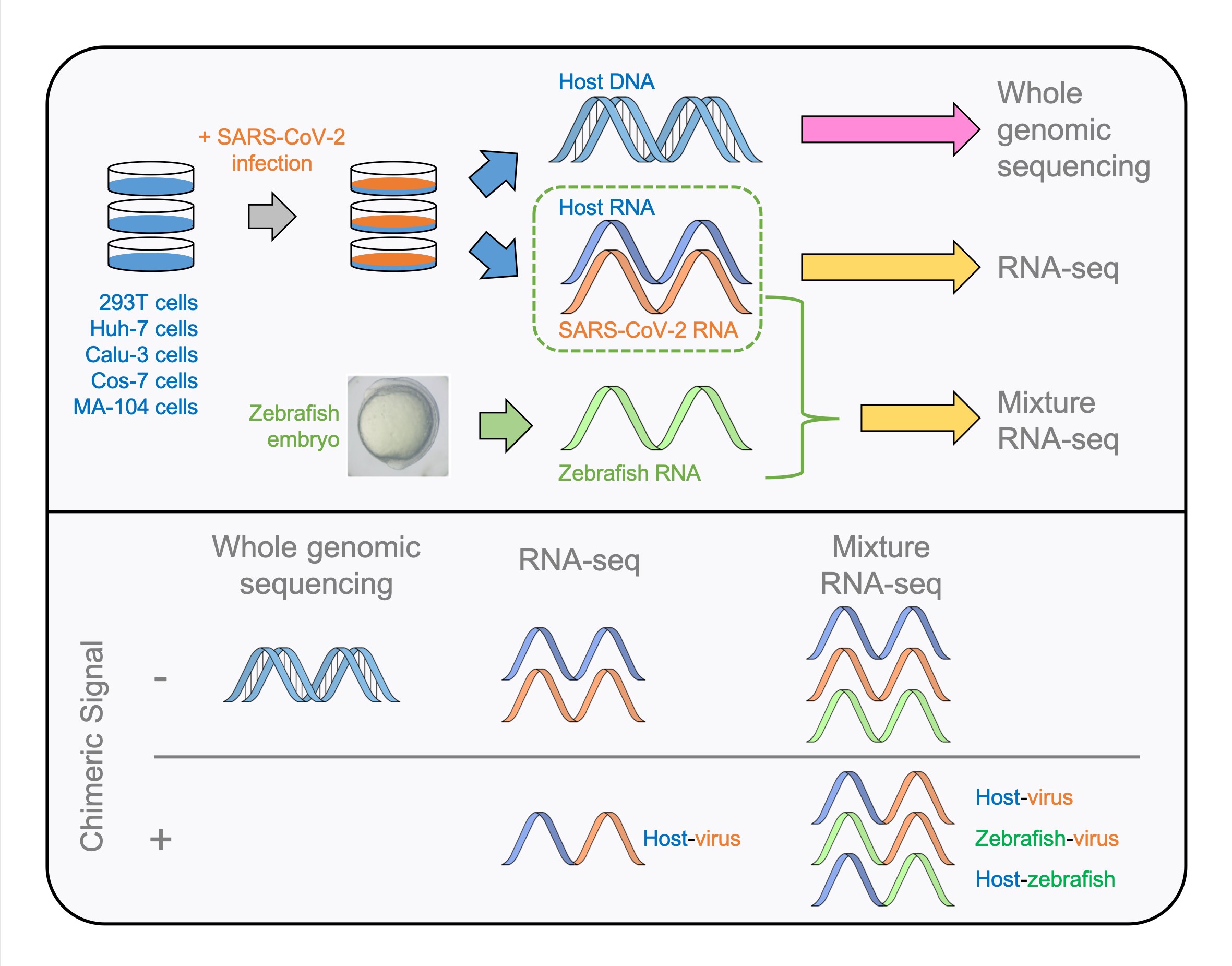A recent study, published in Protein & Cell, and led by Dr. YANG Yungui’s lab from Beijing Institute of Genomics of the Chinese Academy of Sciences (China National Center for Bioinformation) and Dr. PENG Xiaozhong’s lab from Institute of Medical Biology of the Chinese Academy of Medical Sciences, demonstrated that severe acute respiratory syndrome coronavirus 2 (SARS-CoV-2), is incapable of integration into host genome. Both RNA-seq and whole genome sequencing reveal that SARS-CoV-2 are not capable of inserting into host genome (Image by YANG Yungui's group) Contact: Dr. YANG Yungui Email: ygyang@big.ac.cn
SARS-CoV-2 is one kind of positive single-stranded RNA virus which is highly transmissible and caused epidemic of Coronavirus Disease 2019 (COVID-19)
Virus integration into the human genome occurs frequently and is the driving force of human disease. One recent study revealed that SARS-CoV-2 can integrate into the host genome under overexpressing LINE-1 in cultured human cells although it is not retrovirus. Therefore, it is necessary to clarify whether or not the viral RNA sequence could be integrated into the genome of patients, which imposes a long-term health risk.
The researchers first performed RNA-seq for SARS-CoV-2 infected human (293T, Huh-7 and Calu-3) and monkey (Cos-7and MA-104) cells. They detected host-virus chimerisms from both SARS-CoV-2 and host RNA, which occupied about 0.5%~1.8% sequencing data of virus, and found that the reproducibility of the chimeric levels was quite low and positive correlation existed between chimeric events and gene expressions.
Then, they performed whole genome sequencing for the corresponding human cells, but didn’t detect any chimeric signals along host genome and reads aligned to SARS-CoV-2 genome, indicating that SARS-CoV-2 didn’t have the capability of integrating into host genome.
To further identify the origin of the chimeric reads from RNA-seq data, RNA-seq was performed on mixed libraries from SARS-CoV-2 infected cells and uninfected zebrafish embryos. Intriguingly, the results showed that both human-viral and zebrafish-viral chimeric reads were detectable and the ratios of chimeric reads from different species were consistent with their RNA abundances, suggesting that the chimeric reads were falsely generated during library construction.
This study, based on RNA-seq and whole genomic sequencing data from infected human and monkey cells, provides clear evidence that SARS-CoV-2 cannot integrate into host genome.
